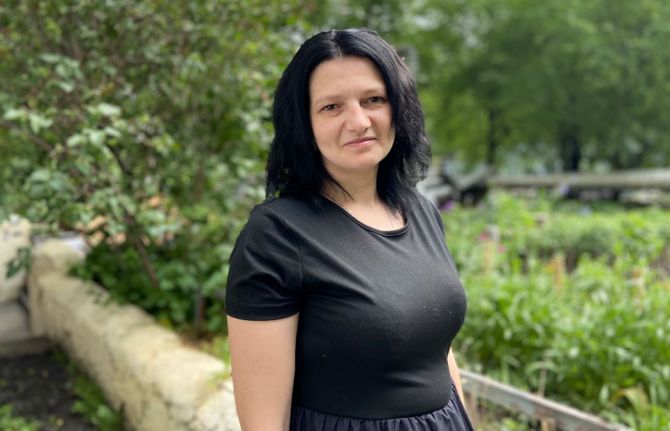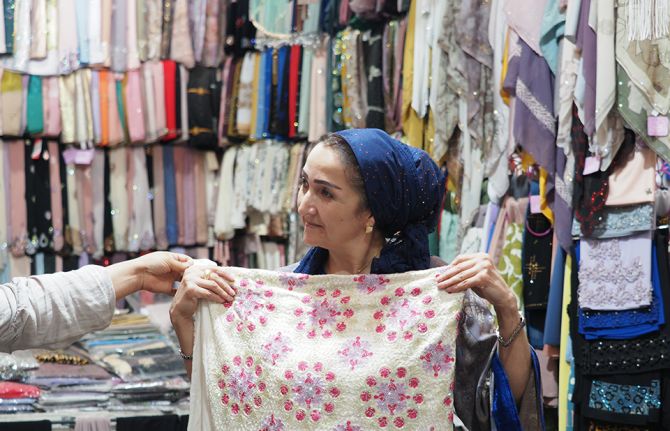

Feature Story
Communities in crisis: The collapse of HIV lifelines in Eastern Europe and Central Asia
01 April 2025
01 April 2025 01 April 2025A support group session for families with children living with HIV had just ended in Dushanbe, Tajikistan, when the news broke: the US Government announced a funding freeze. The room fell silent. For many participants, this group—run by the Tajikistan Network of Women Living with HIV—was their only source of psychological and social support and a vital, trusted bridge to lifesaving medical services. As the network is funded by the US, there was fear for its continued existence.
“People are panicking,” said Tahmina Haidarova, Head of the Tajikistan Network. “They fear that if our support services shut down, women affected by HIV, families with children living with HIV and people from key populations, including those newly diagnosed, will have nowhere to turn for support.”
This fear is now rippling across Eastern Europe and Central Asia (EECA), where community-led organizations and civil society initiatives remain heavily dependent on international funding, particularly from the Global Fund to Fight AIDS, Tuberculosis and Malaria and the US Government (which also funds the Global Fund).
In the majority of EECA countries, national governments do fund antiretroviral (ARV) medicines. However, the broader ecosystem essential to ensuring access to HIV services and treatment —including community outreach, counseling, HIV prevention, peer-led support, and human rights advocacy—has historically been deprioritized by governments and has never been fully institutionalized into national health systems.
This failure to reach people with existing services has led to a devastating outcome: only half of all people living with HIV in the region are on treatment and EECA remains the only region in the world where AIDS-related deaths continue to rise.
Across the region, many people affected by HIV and members of key populations actively avoid healthcare services due to fear of criminalization, stigma, and past experiences of discrimination. Without trusted community organizations to support and guide them, they fall through the cracks. In a region where 94% of new HIV infections occur among key populations and their partners, community-led support has been—and continues to be—essential.
“These services are not optional. They are the very foundation of an effective HIV response in a region where people are routinely excluded from healthcare due to criminalization, stigma, and discrimination,” said Vera Ilyenkova, UNAIDS Adviser on Key Populations and Community Engagement for the EECA region. “The process of building sustainable community-led services through national roadmaps and social contracting has only just begun. These fragile advances are now at serious risk.”
Ukraine, once a regional leader in transitioning from donor to domestic funding, has been forced to reverse course due to the war. The country has become heavily dependent on international assistance to sustain essential medical care, including HIV services. The US Government currently supports antiretroviral therapy (ART) for more than 117,000 HIV patients and pre-exposure prophylaxis (PrEP) for more than 13,000 people at high risk of HIV exposure in Ukraine. Although ART supply continuity has been confirmed, the wider impact of reduced funding is already being felt. '100 Percent Life'—the largest network of people living with HIV in the country—expects to lose a quarter of its workforce, and a critical situation has arisen regarding the availability of PrEP medications. The supply of antiretrovirals for PrEP, funded by the US Government, has been cancelled.
In Kazakhstan, the US Government supported peer-led services, HIV prevention programs, and professional training in two regions are now under threat. In Tajikistan, US funding enabled the expansion of HIV testing, access to PrEP, and essential services provided by civil society groups to communities that would otherwise remain invisible to the healthcare system.
Although Uzbekistan did not receive direct US Government funding for HIV-related programs, critical initiatives such as civic space development, education, and HIV advocacy were supported by US assistance. With these programs now closed, organizations working on HIV-related legal reforms, anti-discrimination efforts, and rights-based healthcare access are facing increased challenges in continuing their work and advocating for policy change.
The US funding cuts have also significantly impacted regional community networks and multi-country initiatives doing regional advocacy. Collective efforts in harm reduction, HIV decriminalization, and legal reform across EECA are now struggling to survive. Several organizations that have played pivotal roles in shaping inclusive, human rights-based responses to HIV are facing critical funding cuts and may be forced to shut down entirely by mid-2025.
“This is not just a financial crisis,” said Ganna Dovbakh from the Eurasian Harm Reduction Association. “It is a crisis of global values and priorities. Right now, the future of our dignity, health, and human rights is uncertain. Community organizations are the first responders in this crisis—yet they’re being forced to survive without oxygen, and preferably in silence.”
Emergency mitigation measures are underway, including the reprogramming of international funds and new partnerships—such as emergency support from the Deutsche AIDS Stiftung for grassroots organizations in Ukraine and Tajikistan—but these are stopgap solutions. They cannot replace long-term, strategic investment.
“We call on donors to ensure emergency support for these organizations; on governments to integrate and co-finance community services as part of national health strategies; and on international partners to continue pushing for inclusive, rights-based responses to HIV that leave no one behind,” said Eamonn Murphy, UNAIDS Regional Director for Asia Pacific and Eastern Europe and Central Asia.
Because without communities at the center, there is no response—and no hope of ending AIDS.



